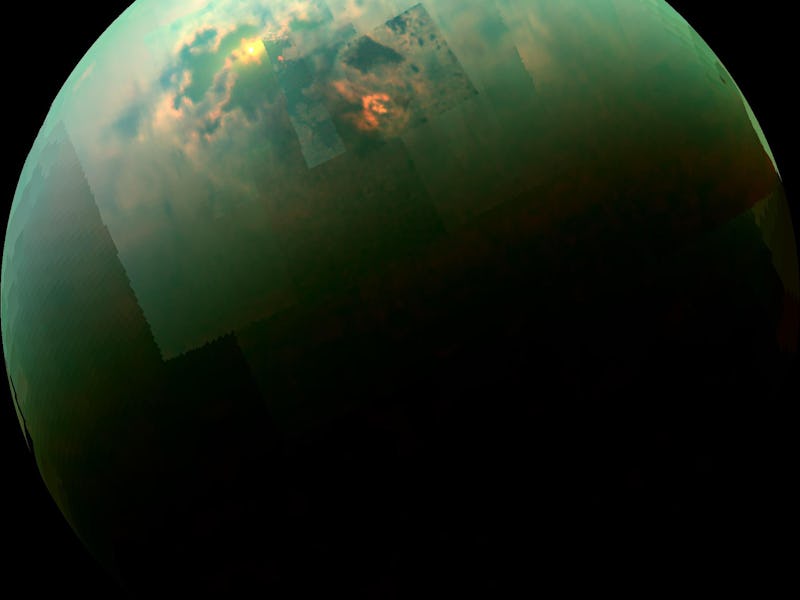A casual day on Saturn’s largest moon, Titan, sounds like living in the Upside-Down from Stranger Things. In addition to having methane lakes, the bizarro world is full of electrically charged sand. Maybe it’s on-brand that scientists have now found evidence that intense methane rainstorms on the Saturnian moon occur more frequently than previously assumed.
Using computer simulations based on observations from NASA’s Cassini mission, a team of researchers at UCLA were able to estimate that methane rainstorms occur less than once per year on Titan. One year on Titan is equivalent to 29 and a half Earth years, so on face value, these storms seem pretty rare. But actually, the researchers in this study say these tempests happen more regularly than they imagined, and are strongest near Titan’s poles. The team’s findings have been published in Nature Geoscience.
“This is exciting research because no one has ever looked at the intensities and frequencies of extreme rainstorms in a global climate model,” the study’s lead author Sean Faulk, a UCLA graduate student in the Department of Earth, Planetary and Space Sciences, tells Inverse. “All previous studies of Titan’s weather using global climate models focused on the average amount of rain to fall over a given region, averaged over a typical Titan year. But here we look at individual rainstorms and can say approximately how often certain-sized rainstorms can occur.”
If these storms are as severe as the researchers estimate, they could dump at least a foot of rain per day on Titan’s surface. Considering how long a day on Titan is, this methane rainfall can have a serious impact on Titan’s geography, potentially shifting sediment around the moon’s icy surface.
Before its mission ended this past September, NASA’s Cassini spacecraft spotted cone-shaped deposits called alluvial fans on Titan. On Earth, flowing water caused by storms can organize various sediments into alluvial fans, so the idea is that the same thing occurs on Titan but with methane, which sounds infinitely more horrifying.
Saturn and Titan, hurtling through the void together
Even though it might seem like a hellscape shrouded in a cloud of gases, Titan is actually the only satellite in the solar system with a substantial atmosphere. If there’s anything living on Titan, it must be stronger than anything here Earth, or at the very least, content with existing in a methane-filled inferno.
If you liked this article, check out this video of what it looks like to land on Saturn’s moon Titan.
